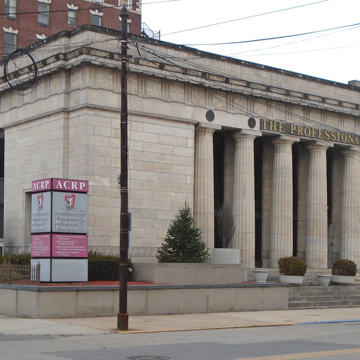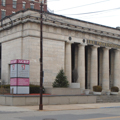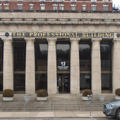You are here
The Professional Building
The design of this Greek Revival former post office adheres to supervising architect James Knox Taylor's proclamation in 1901 that government buildings should return to the “classic style of architecture.” The Market Street elevation, clad in Pennsylvania white marble with a terra-cotta cornice, has a portico of eight fluted Doric columns, while the triglyphs and metopes of the full-facade entablature are appropriate to the Doric order. The post office occupied this building until 1937, when it moved to the larger Boxler Station (CA17). Between 1938 and 1968, the building housed a variety of government offices, including the Works Progress Administration, Internal Revenue Service, and Bureau of Mines. In 1968, Crown Construction (later Crown American Corporation; CA20) purchased the building and occupied it until 1989. Company architect Carl Barefoot renovated it by converting the mezzanine into a full second floor. Today, the building houses various offices.
Writing Credits
If SAH Archipedia has been useful to you, please consider supporting it.
SAH Archipedia tells the story of the United States through its buildings, landscapes, and cities. This freely available resource empowers the public with authoritative knowledge that deepens their understanding and appreciation of the built environment. But the Society of Architectural Historians, which created SAH Archipedia with University of Virginia Press, needs your support to maintain the high-caliber research, writing, photography, cartography, editing, design, and programming that make SAH Archipedia a trusted online resource available to all who value the history of place, heritage tourism, and learning.





